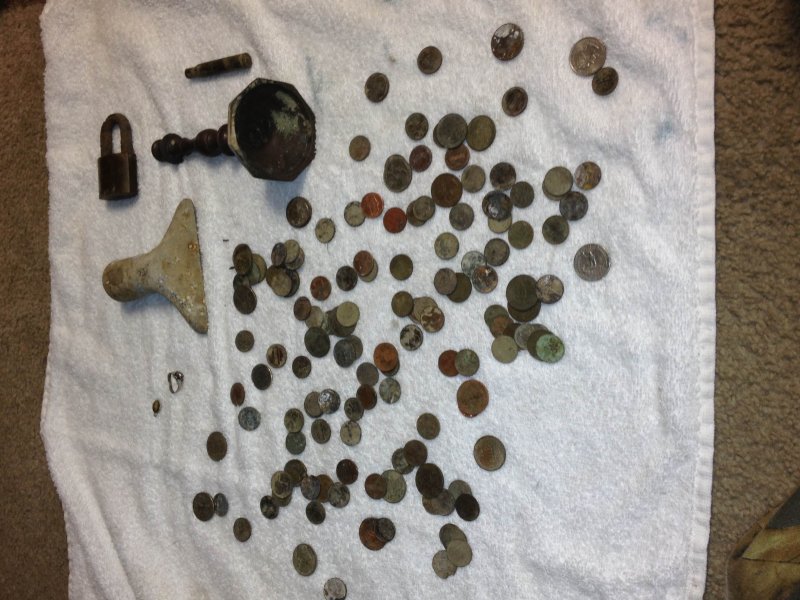Jim McClellan is trying to change the face of metal detecting.
"To most people, someone using a metal detector conjures images of an old guy in a trucker’s hat scavenging for beer and cigarette money. For the most part, that is simply not the case," he says.
McClellan says he first became interested in metal detecting when he saw someone else doing it and inquired about what kinds of things he found.
"He was probably an old guy scavenging for beer and cigarette money," he jokes.
McClellan goes metal detecting as often as the weather allows. He usually detects in public parks, old public schools and anywhere with "a lot of history." He always makes sure he has permission or is in a public space before detecting.
"I’d go everyday if I could," he says.
One of the very first items McClellan found when he first started the hobby was a 24K gold men’s wedding band outside of his apartment complex. McClellan posted a lost-and-found note on his building's bulletin board.
"About a year went by before it was reunited with its incredibly happy owner," he says.
He has also found coins minted prior to 1965 (which are 90 percent silver), jewelry, watches, old toys, Depression-era trade tokens, guns, Civil War stuff and a rare Native American fleshing tool.
"I almost threw it out thinking it was a big lump of old junk," he says. "You'd be amazed at what can be found in your own yard. Maybe people will actually start inviting treasure hunters on their land when they ask permission to hunt there, instead of sending them away."
For McClellan, metal detecting is about more than treasure, though.
"Metal detecting is a combination of both the thrill of the hunt, and the opportunity to get out in nature," he says. "You certainly don't find something of value every time you go out, but the possibility is always there. At the very least, you're out enjoying nature, and it's pretty good exercise too."
Recently, McClellan posted a Craigslist ad offering guided tours and introductions to the metal detecting hobby. For $25, a person can get an instructional tour using one of McClellan’s detectors.
"This is a wonderful activity for the whole family. It gets you out in the fresh air weather, exercising, bonding, chatting about history and learning a new hobby. There's also the thrill of the hunt," reads the ad copy.
Metal detectors range in price from $200 up to $5,500 or so, but according to McClellan, a decent one runs between $200 and $400.
"It's like anything else," he says. "You get out of it what you put into it. You don't want to go too cheap as it can be very discouraging to either be digging a lot of junk items or digging nothing at all. The metal detecting industry is very competitive and there are numerous manufacturers providing entry-level detectors at good price points for the beginner."
McClellan considers metal detecting a leisure activity, but he has big plans for the future of his hobby. In the future, he plans to offer recovery services to help people find their lost items and to teach people how to most effectively use a metal detector.
"Mostly, I hope to promote the hobby positively and change the public's perception of the hobby from something that's a little weird and a bit creepy to what it really is – a fun, relaxing and sometimes profitable past time," he says.
Molly Snyder started writing and publishing her work at the age 10, when her community newspaper printed her poem, "The Unicorn.” Since then, she's expanded beyond the subject of mythical creatures and written in many different mediums but, nearest and dearest to her heart, thousands of articles for OnMilwaukee.
Molly is a regular contributor to FOX6 News and numerous radio stations as well as the co-host of "Dandelions: A Podcast For Women.” She's received five Milwaukee Press Club Awards, served as the Pfister Narrator and is the Wisconsin State Fair’s Celebrity Cream Puff Eating Champion of 2019.



.jpg)

